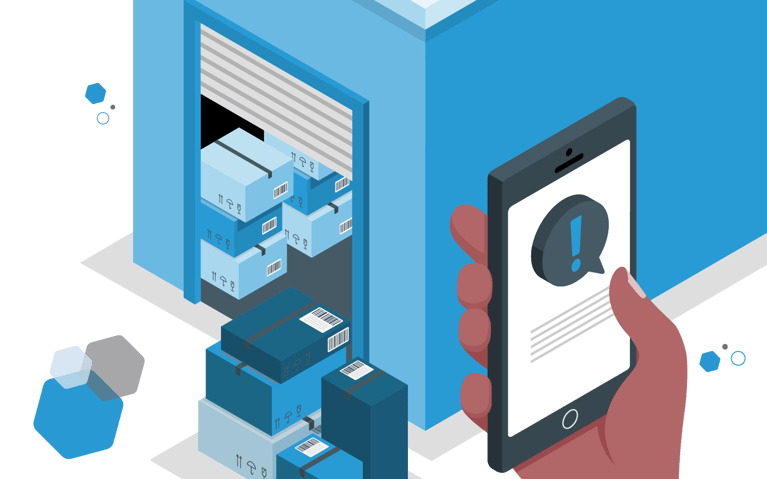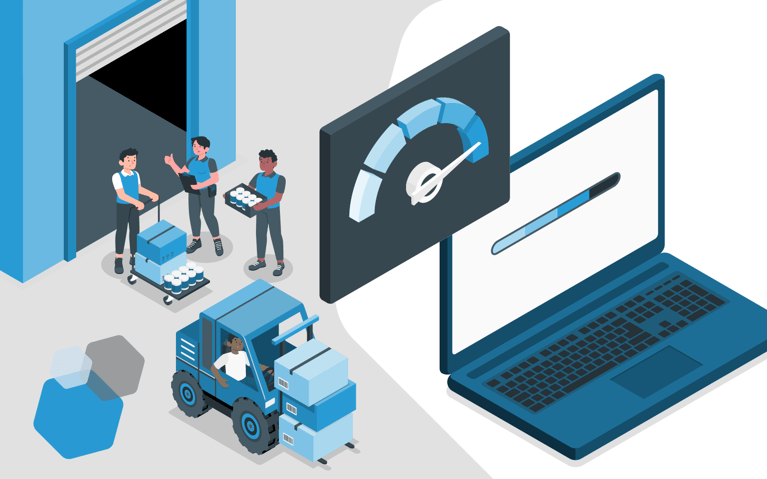As we head into October, the holiday promotion season is officially here! With Amazon's October Prime Days now wrapped up, today, 10/10, mark’s the day many retailers are kickstarting their holiday campaigns. If you run an ecommerce business, it’s time to lock-in your promotion plan for the next few months. The stakes are high, and every holiday is an opportunity to drive sales, so it’s crucial to prepare strategically.
To ensure your promos resonate with your audience and support your sales goals, follow these updated steps to plan a holiday promotion strategy that delivers results without cutting too deeply into your margins.
Step 1: Determine your promotional appetite
The first step in crafting your holiday promo plan is to decide how aggressive you want to be with your offers. There are three common levels to consider during the holiday season:
- Low: Only the key shopping events, such as Black Friday, Cyber Monday and possibly Christmas Eve sales.
- Moderate: Key shopping events plus early holiday promos, such as Thanksgiving weekend or Green Monday, designed to capture early shoppers and last-minute buyers.
- High: A holiday promotion at every opportunity, including niche moments like post-Christmas sales, New Year's discounts and any days you can leverage between November and January.
Once you determine your level of promotional activity, assess whether your inventory can support this strategy. Do you have a wide enough product assortment to offer fresh promotions throughout the season? Repeating the same promo too often can lead to customer fatigue, where buyers expect constant discounts or simply hold off on purchases, waiting for better deals.
Pro Tip: Start with smaller offers (e.g., offering a lower percentage off) to give yourself room to adjust if necessary. Your goal is to encourage conversions without sacrificing too much margin—find the sweet spot where the promotion pushes sales without discounting more than needed.
 Step 2: Select the right holidays for your strategy
Step 2: Select the right holidays for your strategy
Now that you know how promotional you’ll be, the next step is to select which holidays or events to target. For most ecommerce brands, the holiday season is about more than just Black Friday or Cyber Monday. Consider other occasions that make sense for your audience or align with your brand’s identity.
Here are some popular holidays to consider:
- Halloween (10/31) – Great for themed promotions.
- Thanksgiving Weekend (Black Friday & Cyber Monday) – A staple for any ecommerce business.
- December Holidays (Christmas, Hanukkah, Kwanzaa) – Peak shopping season, ideal for both major discounts and last-minute deals.
- New Year’s (12/31) – Perfect for “New Year, New You” campaigns, especially in health, wellness,or fashion sectors.
Look for holidays that align with your audience’s interests or that could create urgency and relevance in your marketing campaigns.
Step 3: Pair the right promotions with each Holiday
Once you’ve chosen your target holidays, it’s time to decide what types of promotions to run. Here are a few proven options:
- Percentage off: Offering a percent discount is straightforward and appeals to a wide audience. Strong “Friends & Family” promotions often feature 20–30% off with free shipping. If you’re new to running promos, start at 20% and adjust based on performance.
- Dollar amount off: Encourages customers to buy more by offering a set discount for a minimum spend (e.g., “Spend $50, Get $10 Off”). This is especially effective when tiered to encourage higher AOV (e.g., “Spend $50, Get $10 Off; Spend $100, Get $25 Off”).
- Buy One, Get One (BOGO): A classic but often margin-heavy promotion. It works best when you need to move excess inventory or during key shopping moments like Black Friday. Consider offering BOGO50 (Buy One, Get One 50% Off) for more control over margins.
- Gift with purchase (GWP): Adds value by bundling free products with purchases. This tactic is particularly popular in beauty and fashion, where a small, complementary gift can drive conversions and build loyalty.
- Free shipping: Not as compelling as percentage or dollar-off promos, but still effective for lowering the purchase barrier, especially for undecided buyers.
Choose the promotional tactics that make the most sense based on your goals, margins, and inventory levels. Keep an eye on performance and adjust throughout the season.
Step 4: Optimize your pre- and post-click experience
A well-executed promotion is more than just the offer itself—it’s how you communicate it to your audience. To maximize your promo’s impact, follow this checklist:
Plan a social strategy: Create relevant and visually compelling content to promote each offer on your social channels. Build anticipation with “Coming Soon” posts and include reminders as the sale progresses. For bigger promotions, such as Black Friday or Cyber Monday, create themed graphics and assets to make your posts stand out and increase engagement. Leverage user-generated content (UGC) to showcase real customer experiences and build trust.
Activate paid media: A strong paid media strategy will amplify your promotions across various channels. Consider these options:
- Influencers: Partner with influencers who resonate with your target audience to promote your holiday sales. Influencers can create authentic content that drives traffic and builds credibility.
- Digital ads: Invest in social media ads (Facebook, Instagram, TikTok) and Google Ads to target specific audiences based on shopping behavior, demographics and retargeting strategies. Use dynamic ads to showcase relevant products based on customer interests.
- UGC and social proof: Feature UGC in your paid ads to enhance credibility and authenticity. When potential customers see real people using your products, they are more likely to convert.
Build SEO-friendly landing pages: Ensure that your promo-specific landing pages are optimized for search engines using holiday-related keywords to attract organic traffic. This will help your promotions get found and drive traffic to your site throughout the season.
Use email marketing: Email remains one of the best ways to engage with your audience during promotions. Send teaser emails to build anticipation before the promo starts, followed by regular reminders throughout the sale. A final-day reminder can often generate a significant boost in conversions.
Update website assets: Ensure your website reflects the promotion across all key pages. For major promos, create custom banners and pop-ups to capture attention as soon as visitors land on your site. Don’t forget to update your product pages and category sections to highlight special offers, making it easy for shoppers to find discounted items.
Step 5: Plan your logistics
A seamless logistical process is crucial to delivering a great customer experience, especially during peak shopping periods like the holidays. Planning ahead for inventory, fulfillment,and customer service will help ensure smooth operations when the orders start pouring in.
- Inventory planning: Ensure you have enough inventory to meet demand during the promo. Conduct a thorough review of your stock levels before launching any major promotions. Anticipate popular items selling out quickly, and have backup options (like offering gift cards or substitutes) if inventory runs low.
- Monitor promotions in real-time: On the day of the promo, assign team members to marketing campaigns, website performance, and inventory levels. If any issues arise (e.g., paused ads, stockouts, website crashes), you’ll need to act quickly to minimize customer frustration. Real-time monitoring also allows you to adjust ad spend or update messaging based on performance.
- Prepare for shipping & fulfillment: With an influx of orders, your fulfillment operations need to be ready. Plan staffing needs, and ensure your shipping partners are aware of any potential spikes in volume. Consider offering expedited shipping options during the holiday season, especially as shipping deadlines approach.
- Customer service: Have your customer service team prepared to handle an increase in inquiries, from product availability to shipping timelines. Offering clear, transparent communication around delivery times and potential delays is crucial to managing customer expectations.
Step 6: Plan your post-holiday season playbook
The holiday season may end, but your promotional efforts shouldn’t stop there. The post-holiday period presents a crucial opportunity to turn holiday shoppers into loyal, repeat customers and to evaluate your campaign performance to optimize future promotions. Here’s how to make the most of the post-holiday phase:
Manage returns effectively
Holiday returns are inevitable, but handling them smoothly can enhance the customer experience and build long-term loyalty. A few strategies to consider:
- Simplify the returns process: Make it easy for customers to return or exchange items by providing clear instructions and offering free return shipping if possible. A user-friendly return portal or clear in-package instructions will minimize friction and reduce frustration.
- Turn returns into opportunities: Engage customers during the return process by suggesting exchanges or offering incentives (such as a discount on their next purchase) to encourage them to shop again. Consider offering personalized product recommendations based on their previous purchase to drive another sale.
Retain new customers
The influx of holiday shoppers gives you the chance to grow your customer base beyond the seasonal rush. Keep these customers engaged:
- Follow-up campaigns: After the holiday season, send personalized emails thanking your customers for their holiday purchases, offering a special post-holiday discount, or promoting New Year’s deals. These campaigns can help convert first-time buyers into loyal customers.
- Exclusive offers: Offer bounce-back promotions that give customers an incentive to return to your store. For instance, provide a discount or free shipping on their next purchase if they shop within a certain time frame (e.g., “15% off your next order if you shop by the end of January”).
Analyze and optimize for future success
Once the holiday season ends, it’s essential to evaluate your promotional performance to learn what worked and what didn’t. Use this data to fine-tune your future campaigns:
- Review key metrics: Analyze key performance indicators such as conversion rates, average order value (AOV), return on ad spend (ROAS) and customer acquisition costs. Identify which promotions were most effective and where there may be room for improvement.
- Monitor customer feedback: Pay attention to customer reviews, social media feedback, and post-purchase surveys to understand how your promotions resonated with your audience. This can offer insights into areas like product preferences, shipping experiences, and customer service.
- Plan for next year: Use the insights gained from this year’s campaigns to start planning for next year. Did certain products sell out quickly? Were there any logistical challenges during fulfillment? Adjust your inventory planning, promotional timing and marketing tactics based on these learnings to improve future campaigns.
The holiday season is a critical time for ecommerce brands, and with the right preparation, your promotions can drive significant revenue while building customer loyalty.
By following these six steps—from setting your promotional strategy and choosing the right offers to managing logistics and retaining customers post-holiday— you’ll be well-equipped to maximize your results. And remember, the key to long-term success lies not only in executing great holiday promotions but also in learning from each campaign to improve for the future.
Start planning today, and set your brand up for a successful holiday season and beyond!
Cart.com for your full suite of omnichannel commerce solutions
Reach your brand's full potential with our expert team of digital media, ad creative and growth marketing professionals. We craft performance-driven strategies that deliver results. Beyond marketing, Cart.com offers a full suite of omnichannel commerce solutions, including fulfillment, customer service marketplace services, and inventory management. Our teams are there to support your business at every stage.
Subscribe to our emails for the latest industry insights!
By entering your email, you agree to receive marketing emails from Cart.com






